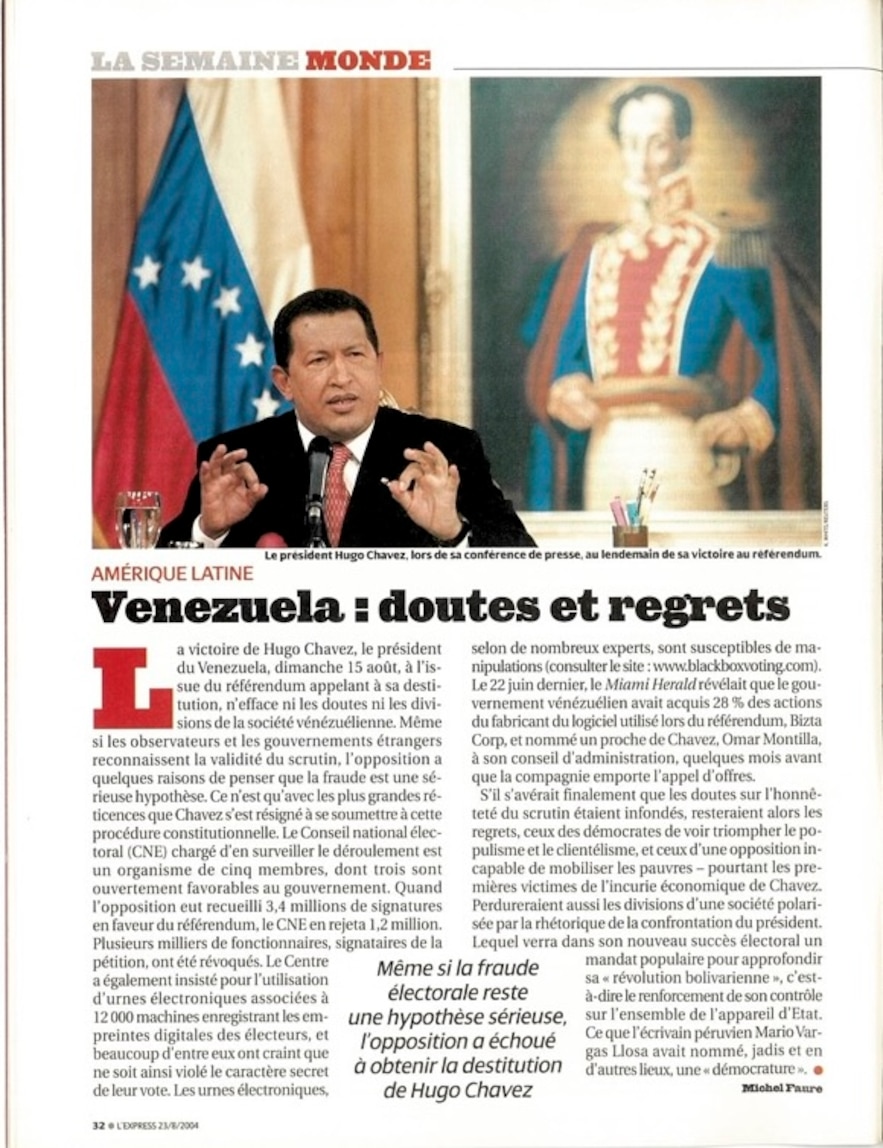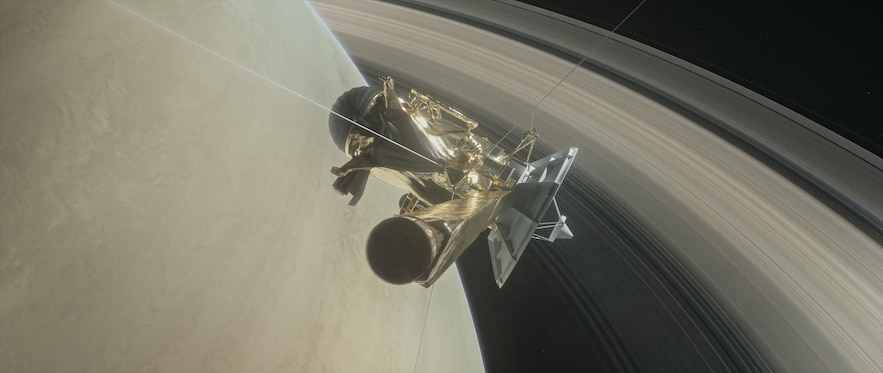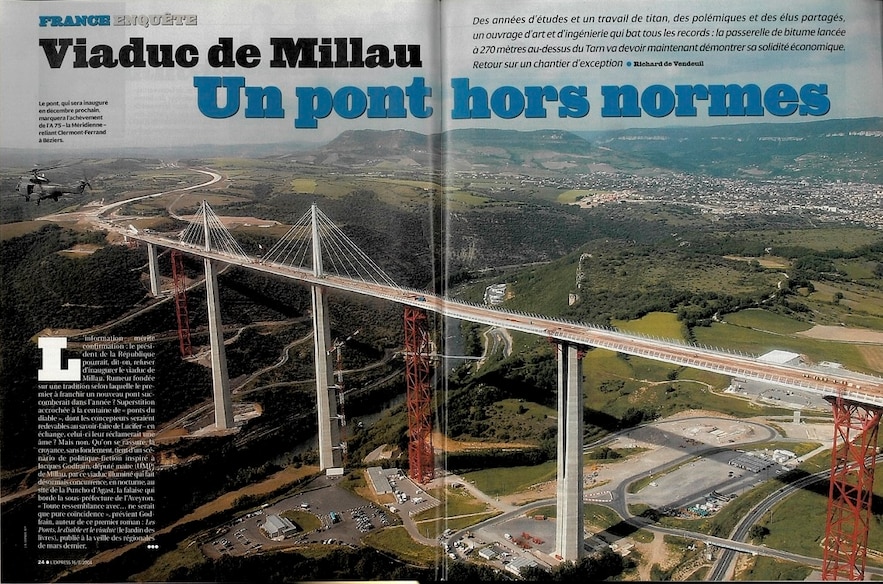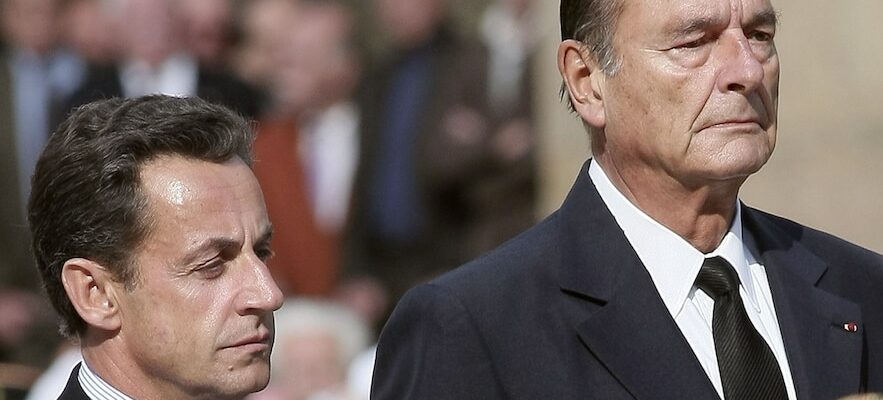From the end of the Indochina War to the Watergate affair, to the appointment of Emmanuel Macron to Bercy, rediscover through our archives Highlights of the summers of each decade between diplomatic advances, political crises and scientific progress. This week, the summer of 2004.
EPISODE 1 – Summer 54: the hope of Mendès France, the end of the Indochina war, a coup d’état in Guatemala
EPISODE 2 – Summer 64: the end of racial segregation in the United States, the birth of ORTF, the first photos of the Moon
EPISODE 3 – Summer 74: the shock of Nixon’s resignation, the decline of the majority and the Larzac struggle
EPISODE 4 – Summer 84: there demonstration for free schools, Fabius at Matignon, the Los Angeles Olympics
EPISODE 5 – Summer 94: the pre-campaign for the presidential election, the return of Arafat to Palestine, the death of Kim Il-sung
UMP Presidency or Bercy: Sarkozy’s Dilemma
In the summer of 2004, the next presidential election was already on everyone’s mind. On the right, Nicolas Sarkozy did not hide his desire to conquer the head of the UMP, the spearhead of the future campaign for 2007. Jacques Chirac decided to leave the way open to his Minister of the Economy but warned: “A minister cannot be at the same time president of the main party of the majority.”
Nicolas Sarkozy and Jacques Chirac in Paris on September 4, 2007
© / afp.com/MICHAEL SAWYER
“One moves my heart, the other holds back my arm.” Political Cid, Nicolas Sarkozy is going to have a difficult summer: how to resolve the dilemma imposed by the president, how to choose between the presidency of the UMP and the Ministry of the Economy? Because Jacques Chirac, by removing all obstacles to Sarkozy’s accession to the head of the majority party, has set a trap for him. Whatever his choice, the minister will not be able to hold anyone responsible, not even the president, who has only issued a rule of institutional common sense by prohibiting the combination of Bercy and UMP. Free was the title of the book published by Nicolas Sarkozy in 2001: Chirac took him at his word. Sarkozy’s worst enemy being himself, he had to think carefully before deciding, at the very beginning of September.
Getting his hands on the UMP has several advantages for Sarkozy. He would then have control over a rich apparatus, despite the electoral vicissitudes, of tens of thousands of activists and many devoted executives, a true captive audience for the “Sarko Show”. Above all, he would control an annual budget of nearly 40 million euros, including 33 million in public funding. The UMP is also a thinking machine, which only asks to be awakened and used. As President of the UMP, Sarkozy could also break away from his logic of a close-knit clan to build around him a larger team of loyalists. Finally, the UMP would be an ideal base for dialogue with the UDF and rethinking the “plural right”, since the dream of the single party is defunct. “No victory is possible in the 2007 presidential election without control of the UMP”, summarize his close associates. Certainly, but must Sarkozy control the UMP in person now, at the cost of his government presence?
The Bercy fortress, for many more months, offers many advantages: Sarkozy can deploy his activism there on countless issues, more varied than at the Ministry of the Interior. If growth returns sustainably, he can be the man who lowers unemployment, after having been the one who controlled insecurity, completing the panoply of “Magic Sarko”. Moreover, in “minister of state”, there is half a head of state. But Sarkozy needs to flesh out his international stature to be a complete presidential candidate, just as he must further nourish his thinking on the most complex economic and social issues. Finally, the weakness of Jean-Pierre Raffarin assures him the monopoly of the media forefront. Resign in November 2004, with projects unfinished, or leave in the course of 2006, with the task accomplished, to take a step back, meet the French people and prepare for the future: depending on the option chosen, the bonus for the government’s record will not be the same.”
L’Express of August 2, 2004
Venezuela: Referendum for or against Hugo Chavez
On August 15, 2004, Venezuelans were asked to vote on the possible impeachment of their president Hugo Chavez. The no vote won, but doubts arose about the fairness of the vote.

Article on the political situation in Venezuela following the referendum of August 15, 2004.
© / The Express
“The victory of Hugo Chavez, the president of Venezuela, on Sunday, August 15, at the end of the referendum calling for his impeachment, does not erase the doubts or the divisions of Venezuelan society. Even if observers and foreign governments recognize the validity of the vote, the opposition has some reason to believe that fraud is a serious hypothesis. It is only with the greatest reluctance that Chavez has resigned himself to submitting to this constitutional procedure. […]
If it were ultimately to prove that doubts about the honesty of the vote were unfounded, then regrets would remain, those of the democrats at seeing populism and cronyism triumph, and those of an opposition incapable of mobilizing the poor – yet the first victims of Chavez’s economic negligence. The divisions of a society polarized by the president’s rhetoric of confrontation would also persist. He will see in his new electoral success a popular mandate to deepen his “Bolivarian revolution”, that is to say the strengthening of his control over the entire state apparatus. What the Peruvian writer Mario Vargas Llosa had called, in the past and elsewhere, a “democratura”.
L’Express of August 23, 2004
As close as possible to Saturn
After having travelled more than 3 billion kilometres in seven years, the American-European probe Cassini-Huygens is due to enter orbit around Saturn on 1 July 2004. L’Express provides the keys to this “perilous manoeuvre”.

The American probe Cassini about to make one of its dives between Saturn and its most intimate rings, image provided by NASA on April 6, 2017
© / afp.com/Handout
“At dawn on Thursday, July 1, the Cassini-Huygens probe will attempt to place itself in orbit around Saturn. A perilous maneuver that will lead it to make two successive passes through its famous rings. “The risk of collision with debris exists, but it would not be fatal,” estimates Jean-Pierre Lebreton, scientific manager of the mission at the European Space Agency (ESA).
Jointly financed in the 1980s by the United States and Europe, Cassini-Huygens is the third largest heavyweight ever sent into space: 6.7 meters high, 4 meters wide and 5.7 tons of “muscle” (18 scientific instruments). An enormous ensemble, boosted with plutonium, served by 260 specialists, and which cost a whopping 3 billion dollars. Saturn is worth the same madness, given its distance (1.275 billion kilometers from Earth) makes it mysterious to us. Until now, only three vessels have been able to approach it (Pioneer 11, Voyager 1 and 2). “Cassini-Huygens will therefore be its first artificial satellite, for at least four years,” enthuses Daniel Gautier, emeritus researcher at the CNRS, who was one of the main instigators of the mission. This will allow us to better understand the internal composition of the planet, its very particular magnetic field, its distended atmosphere and even the incredible winds that sweep across its surface (up to 1,800 kilometres per hour).”
L’Express of June 28, 2004
Millau: the viaduct of all records
An exceptional construction site is nearing completion. After fourteen years of preparation and three years of construction, the work of art resembling a sailboat, a combination of concrete and steel, is nearing completion. It will be inaugurated by Jacques Chirac on December 14, 2004.

The great adventure of the Millau viaduct in L’Express of August 16, 2004.
© / The Express
“A wall-passer of the last few kilometres of Aveyron having resisted the Méridienne, this free A75 which should, from summer 2005, link in one go the 340 kilometres separating Clermont-Ferrand from Béziers, the Millau construction, out of the ordinary, exerts a magnetism. As if a microclimate reigned around its maxi-project, carried out at breakneck speed in thirty-nine months.
“We had a hard time,” sums up Michel Virlogeux, lapidarily. Designer of the Normandy bridge, formerly of the Ministry of Equipment, where he followed, within the Technical Studies Department for Roads and Motorways (SETRA), the studies that led to the project on the causse, Virlogeux knows the terrain: “It took a year of studies to organize the pushing system, a real novel! Compared to it, the Normandy bridge was a bluette.” “We could still have a hard time,” echoes Alain Desjardin. Formerly of the Larzac campaigns, ex-regional spokesperson for the Greens, Desjardin is one of those who contested the choice of the route of the A75 and, with it, of the structure chosen. A marginalized opposition, despite an alternative project suggesting a bypass of Millau further west, to take into account Roquefort and Saint-Affrique. […]
A sleek footbridge thrown between Causse Rouge and Larzac, a 2,460-metre-long ribbon of high-tech bitumen suspended between heaven and earth 270 metres above the Tarn, the Millau viaduct is a reminder that crossing the valley was anything but a long, quiet river, a long march where the challenges of regional planning – opening up the Massif Central area, relieving the saturated motorways of the Rhone valley – competed, it seems, with the aesthetic pleasure of building engineers. The last 36 kilometres leading to the viaduct include no fewer than forty structures!”
L’Express of August 16, 2004
Next week, find summer 2014 in the archives.
